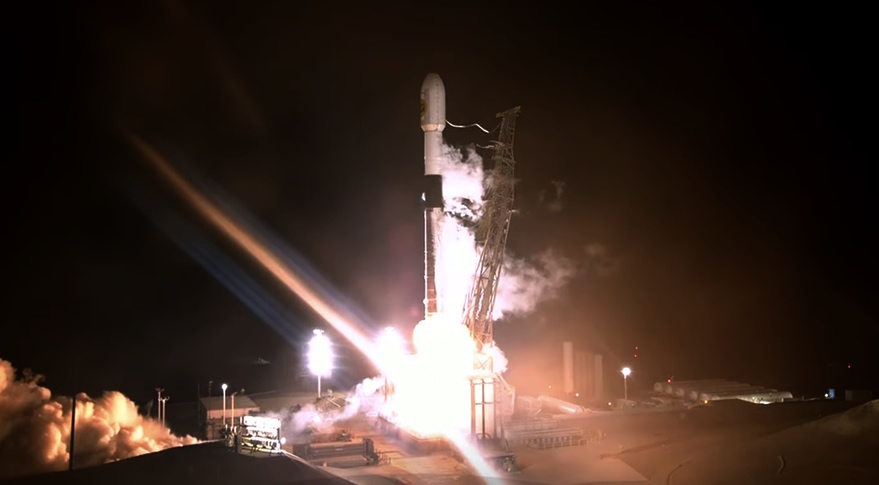Products You May Like
WASHINGTON — SpaceX capped off the busiest year in its two-decade history Dec. 30 with a Falcon 9 launch of a commercial Israeli imaging satellite.
A Falcon 9 lifted off at 2:38 a.m. Eastern from Space Launch Complex 4 East at Vandenberg Space Force Base in California. The rocket’s first stage, flying its 11th mission, landed back at the launch site eight minutes after liftoff.
The Falcon 9 upper stage deployed its payload, the EROS C3 imaging satellite, nearly 15 minutes after liftoff. The satellite was released at an altitude of nearly 500 kilometers in an unusual mid-inclination retrograde orbit, rather than the sun-synchronous orbit commonly used for optical imaging spacecraft.
EROS C3 was built by Israel Aerospace Industries (IAI) for ImageSat International, a Tel Aviv-based commercial imaging company. The 400-kilogram satellite, based on IAI’s OPTSAT-3000 bus, is designed to take images at a resolution of 30 centimeters.
ImageSat International, which went public in February on the Tel Aviv Stock Exchange, stated in a prospectus filed as part of that process that EROS C3 cost the company $186 million, a figure that included the spacecraft itself, the launch and insurance. The company planned to use part of the $100 million raised from going public to pay some of the remaining costs to build and launch the spacecraft.
EROS C3 joins EROS B, launched in 2006, as satellites owned and operated by ImageSat International. The company also offers imagery from two other satellites, which it calls EROS C1 and EROS C2, that are owned by an unnamed third party but have capabilities similar to EROS C3. Those satellites may be part of the Ofeq series of Israeli reconnaissance satellites, also built by IAI, which operate in mid-inclination retrograde orbits similar to EROS C3 because of the limitations of launching from Israel.
EROS C3 is part of ImageSat’s EROS NG constellation, which includes EROS C1 and C2 as well as a planned future imaging satellite, EROS C4, slated for launch in 2026. EROS NG will also incorporate two synthetic aperture radar satellites that will be owned by an unnamed third party and commercialized by ImageSat.
The launch of EROS C3 completed the most active year to date for SpaceX. The company performed 61 launches, all successful, in 2022. All but one, a Falcon Heavy launch for the U.S. Space Force, were of the company’s Falcon 9 vehicle, which has become a workhorse for the global space industry.
SpaceX nearly doubled its launch rate from 2021, when the company performed a then-record 31 Falcon 9 launches. That launch activity was driven by the company’s Starlink constellation, which accounted for 34 of the 61 launches in 2022.
The 61 launches SpaceX performed in 2022 exceeded a goal of 60 set by Elon Musk, founder and chief executive of SpaceX, in a tweet in March. Musk has not publicly stated how many launches he expects SpaceX to conduct in 2023, but SpaceX’s first launch of the new year, the Transporter-6 dedicated rideshare mission, is scheduled for no earlier than Jan. 2 on a Falcon 9 from Cape Canaveral’s Space Launch Complex 40.
